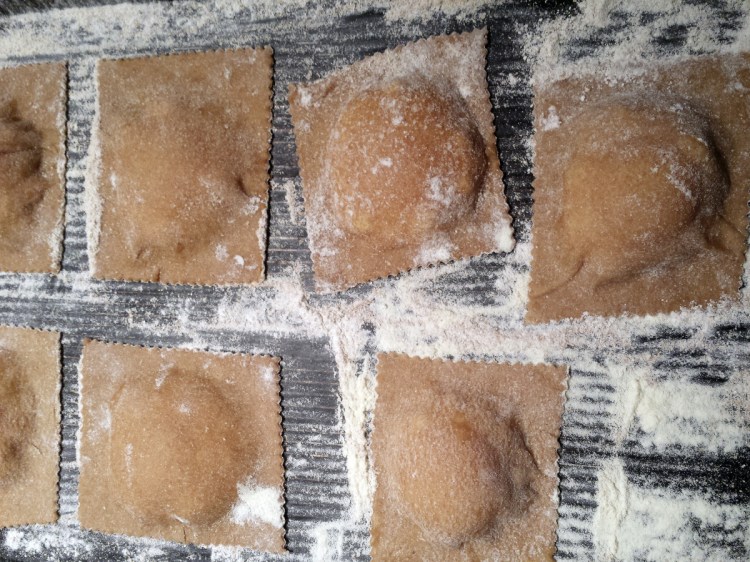My first attempt at making pasta back in 1995 was a complete disaster because I wrongly assumed all fresh pasta was the same kind fresh pasta.
Following the one recipe written in English in the pamphlet that came with the Italian Marcato Atlas pasta roller we’d been given as a wedding gift, I made a huge mess combining factory eggs and generic all-purpose flour on our tiny Formica counter. I used the C clamp to affix the shiny metal machine to our wobbly wooden table and hand cranked the dough through the rollers with varying degrees of success. I hung the wonky, long strands to dry on a web of gray duct tape woven between our wall cabinets. As we slept, the web dissolved, scattering shards of pasta across the floor. We ate boxed pasta that night.

I took my first pasta-making class soon thereafter. There I learned two kinds of homemade pasta exist: egg pasta dough best made with the finely ground, soft wheat Italian “00” flour and farm-fresh eggs and typically put through a pasta roller; and, dough made from water and semolina flour, more coarsely ground flour made from harder durum wheat, which is either shaped by hand or pressed through an extruder into fun shapes. The protein content of a wheat makes it hard (high protein content) or soft (low protein count) and chewy or tender, respectively.
These flours are both traditional and time-tested ingredients in Italian pasta. As with any category of food as vast as pasta, there will always be exceptions, but trips to Italy, subsequent cooking classes, and many cookbooks have reinforced these absolutes of pasta making in my own mind. Until recently, I’d used them exclusively for my own pasta.
But given the influx of flours milled from various types of grains grown in Maine, I began to wonder about feasible local alternatives. I know it is possible – and arguably very delicious – because several local commercial pasta makers are, in fact, using Maine flours in their fresh products. The Maine Meal, a Skowhegan-based producer of frozen meals made from Maine ingredients, uses a Maine Grains flour ground from organic heritage Lucille Emmer, an ancient hulled wheat grown in Aroostook County, for its hearty whole wheat pasta. Four Star Pasta in Biddeford mixes Maine Grains’s sifted wheat with durum flour and local eggs for a more delicate fresh wheat pasta. Owner Susan Flynn says she’d gladly buy local durum wheat flours if they became available.

When Maine Grains has run pasta-making workshops in the past, owner Amber Lambke says participants preferred pastas made with local spelt, rye and sifted flours. While acknowledging the long-standing culinary belief that 00 flour makes the most tender pasta, Lambke says she’s found pastas using local flours can be tender if good eggs are used and the flours are sifted to remove bran.
Sifting is particularly important if you’re using a mechanical extractor to press the pasta into shapes as the bran can gum up the machine.
“That said, I would not dissuade you from trying a whole grain flour in pasta, as those are wonderful too,” Lambke said.
ABOUT THE WRITER
CHRISTINE BURNS RUDALEVIGE is a food writer, recipe developer and tester, and cooking teacher in Brunswick, and the author of “Green Plate Special,” a cookbook from Islandport based on these columns. She can be contacted at cburns1227@gmail.com.
Send questions/comments to the editors.


